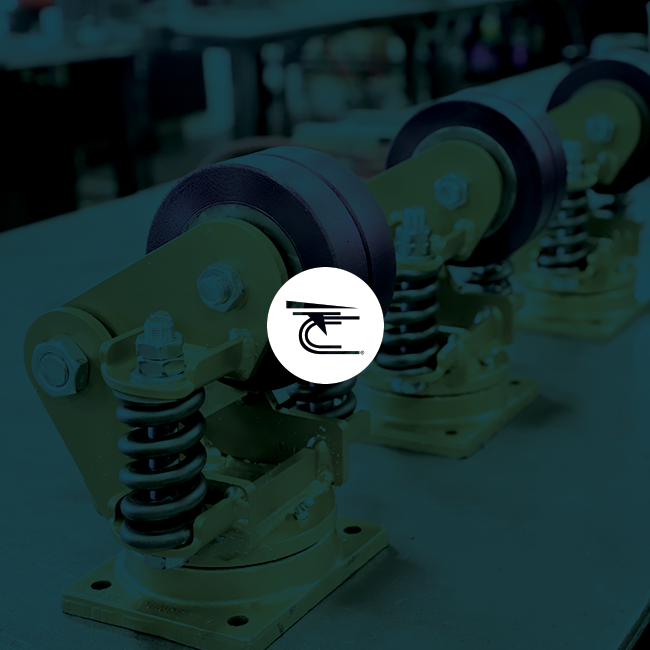

When choosing a caster wheel, it’s best to understand the application you’re using it in. Here are things to consider: Are you exposing the wheel to heat? What is the floor condition — will you need to protect the load from the floor? Or, do you need to protect the floor? Are you using the wheels inside or outside? Also, do you need the cart to roll easier, or do you need to meet an ergonomic push/pull standard?
After you have answered some of those questions, then we need to consider if there are any height constraints to balance the best wheel solution. Armed with the correct information, we can determine which caster wheel will work best for your application based on each wheel’s characteristics.
Phenolic vs Polyurethane Casters:
Steel wheels are great for high capacity and can withstand heat. If you need to carry a lot of load with a smaller wheel, this will be your best option. Also, It’s the best wheel to run on steel tracks typically as a flange or v-groove style caster wheel. However, steel wheels are not friendly to concrete floors and can cause concrete to crack and break away over time.
Nytec wheels are comparable to steel wheels. They can handle high capacity in a smaller size and are slightly more friendly to concrete floors. Depending on the nylon material, they can also handle higher temperatures. Another option is Phenolic. These phenolic caster wheels are made of hard plastic-like material but don’t handle heavy capacities. They are great for high-temperature applications and can be more forgiving on concrete floors. Overall, Phenolic wheels are a lower-cost option.
Pneumatic wheels are the best option for outside terrain. They come in a couple of different styles, such as fully pneumatic, semi-pneumatic, or solid pneumatic. Fully pneumatic wheels are air-filled and have limitations on capacity. The semi and solid pneumatic look like a pneumatic wheel but are solid rubber throughout and can handle higher capacities. These wheels have a lot of deflection, which helps with uneven terrain by protecting the load and keeping the load balanced across all the wheels. Pneumatic wheels are not great for ease of movement. Therefore, manually pushing is not recommended.
Polyurethane wheels are a great option for indoor use and even some outdoor applications, including the best caster wheel material for concrete. Polyurethane is one of the best protectants of concrete floors and is great for ease of movement. Understanding the chemical properties that make each polyurethane unique is a big part of the decision-making process. Typically, a softer tread has a better coefficient of friction for wheels that are driven or can provide some deflection to protect loads. Others consist of a harder durometer and can handle heavier loads. Other polyurethanes have strong tear resistance and can repel debris, while some have more spring to them to roll more easily. Keep in mind that harder doesn’t always roll the easiest. We find that hard wheels can get hung up on small debris, allowing the debris to get embedded in them, making it harder to move. Reach out to your caster specialist or read more on polyurethane’s best caster wheel for concrete to select the better option for your application.